Matt travels to the other side of the world for his ‘miracle drug’
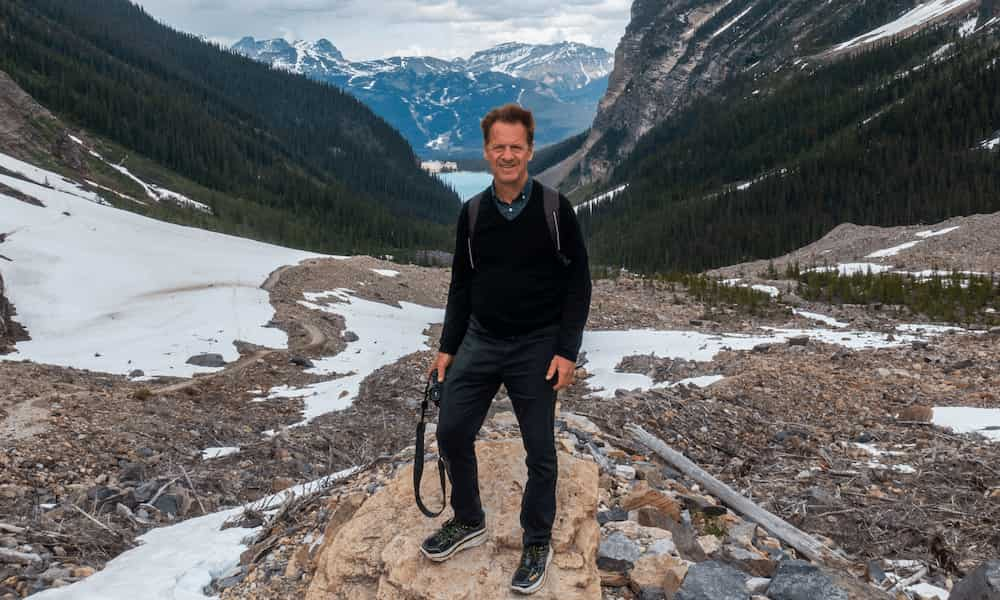
The following are all Matt’s words, shared with the Leukaemia Foundation to help raise awareness of blood cancer during September’s Blood Cancer Awareness Month 2019.
This is my story of a journey with a rare form of blood cancer know as; Hairy Cell Leukaemia variant (HCLv). It’s had me on the ropes a few times, but for now I’ve got the upper hand and it’s under control.
I was diagnosed in January 2004 with Hairy Cell Leukaemia (HCL) when I was 40 years old. I had gone to my GP for a general check-up and to ask him about the swelling in my abdomen, which I subsequently found out was from an enlarged spleen, caused by the infiltration of leukaemia cells. I had worked full time for about 20 years at that stage, and was due to take a redundancy payout in the same week that the diagnosis was made. So it was a time of change in my life. The end of a long period of employment at Channel 7 in Perth, and also the end of my previously good health.
My GP was away on leave at the time I was diagnosed, and I recall the doctor on duty saying to me when the blood test came back, “If there’s anything you want to do, you better do it sooner rather than later”…..
I went home, told my wife, and we both had a good cry. Nevertheless, that grim outcome prediction has inspired me to do my best to prove it wrong.
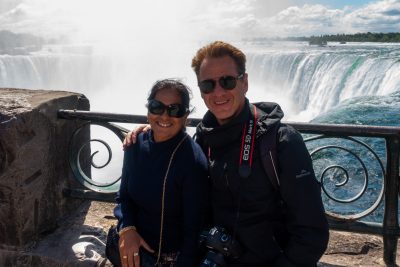
I was quickly referred to a haematologist, who did a bone marrow biopsy straight away, and decided it was Hairy Cell Leukaemia (HCL). The diagnosis acknowledged that it wasn’t clearly HCL, but it was decided to treat it as if it was. In March 2004 I did a cycle of the standard first preference treatment option for HCL known as Cladrabine. The disease was well advanced at that stage, and I failed to gain much more than a slight reduction of disease burden overall. I did get a good initial response in my peripheral blood, but due, in my opinion to the large volume of cells in tissue, such as my spleen, it wasn’t long before I was back where I had started. That was a significant disappointment, as many people with the classic form of HCL do very well when treated with Cladrabine and can have long sustained remissions.
Splenectomy
My next option was to have the spleen removed. It was very enlarged in size from the infiltration of leukeamia cells. It took me quite a long time to feel sure I was ready to have the operation. All surgery comes with risk, and the operation to remove a spleen, which by now was larger than a new born baby, carried additional risk from bleeding complications.
Salmonella scare
To complicate things further, before I had the splenectomy, I caught a dose a Salmonella poisoning. A serious bacterial infection by itself, it’s double trouble for someone with advanced leukaemia. I went to the hospital not knowing what the problem was, and as I waited for the results to come back from blood tests, I felt myself slipping away. I had a distinct feeling, a knowing of certainty, that my body had given up the fight. I felt calm and as I lay alone in the isolated room I had been moved to, I wondered why the room wasn’t full of people who had come to say goodbye to me, if today was to be my last day.
Everything faded toward white, and then in came the nurse, cheerfully informing me that I had Salmonella poisoning. An appropriate anti-biotic was placed it the saline drip attached to my arm, and within half an hour, I was sitting up in bed, on the mend. An astonishing experience that showed to me not only how tenacious our hold on life actually is, but just how quickly the human body can bounce back to ‘normal health’ once the disease burden is removed.
4.6 kilos lighter
My enlarged spleen was removed in October of 2004. The operation went without a hitch. I felt relieved to be freed of the burden of such a large ‘thing’ in my body. It had been drained before it was removed, but still weighed in at 4.6kg. It was indeed huge. Over the next year or so, my body responded to the decrease in disease burden, by restoring itself. No further treatment was administered, and the leukaemia content in my blood was decreasing. In terms of blood counts, I returned to almost normal health in 2008, but by the end of the next year, my hairy cell count was increasing again. I had another cycle of Cladrabine in May 2010. Once again a good response short term, but the disease bounced back quickly.
By 2011 my white cell count (which includes hairy cells) was over 100 (the normal range is between 4 – 11). I felt as though I had sand going around my veins, and could hardly move because of the severe fatigue I felt. I tried about four cycles of Rituximab. Again, slight improvement each time, but none overall, as the disease marched on. The drug ‘Interferon’ was next up, but there was no improvement at all, after some months of trying.
To transplant, or not to transplant…
I started asking my doctors if bone marrow transplant was an option, and also raised the question of my diagnosis again, with a view to the possibility that I had the ‘variant’ form of HCL. I was referred to another specialist, and upon meeting, it was agreed that my prognosis was very poor and that I probably wouldn’t be alive by the end of the next year, unless something was done to control the disease. We tried a cycle of HiDice chemotherapy. The response was sub-optimal. Then came two cycles of HyperCVAD armB chemotherapy. I’d never heard of these drugs being used for HCL before or since, but I needed something out of the ordinary, and it was going to have to be strong. After the second cycle, there was no HCL to be found in my peripheral blood or bone marrow. It was a complete success at the time, other than in my lymph nodes where we subsequently started to notice some swelling.
While my blood was clear of HCL cells, we collected stem cells, for a possible future self-transplant if required. I enjoyed an improved outcome for a few years using Rituximab on occasion, to keep the disease under control.
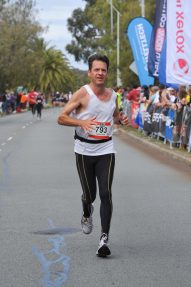
I managed 2nd place in my age group in the 2013 Perth Marathon, so things must have improved a bit! I felt quite well. However, by mid 2014, I was getting strong pain in my neck from pressure caused by the swelling lymph nodes. The HCL population was on the increase, and not even the strongest chemo was getting into the lymph nodes where the cells were hiding. My peripheral blood and bone marrow were still clear of hairy cells, but nothing was having much effect on the cancer in my lymph nodes.
I had my third and fourth cycles of HyperCVAD armB in September and October of 2014 and the overall reduction in swelling I would say was in the order of sixty percent. Not enough to halt the disease. The ongoing pain from swelling lymph nodes throughout my upper body, was hard to live with, fatigue was increasing, and the disease was winning the battle.
Bone marrow transplant was again considered, as my options were not looking good. My one and only sibling, my elder sister, was found to be a suitable match, and she donated stem cells to me. They’re kept in a freezer at the hospital. I wasn’t keen on the transplant option though, as it comes with high risk. It’s an option I have up my sleeve for the future if required.
The (long) road to Ibruntinib
My specialist then tried to get the drug Ibrutinib for me. The compassionate access program is available to Australians who have run out of options and need help in order to sustain life. We tried that option, but Ibrutinib had not been used for HCLv outside of clinical trial, and so in the end the company that owns the drug declined to supply on the grounds of “insufficient data to prove efficacy in the treatment of HCLv”.
I decided I should extend my Google searching outside the bounds of Australia, and found a clinical trial in the United States that was recruiting HCL and HCLv patients to test Ibrutinib. I contacted the trial doctors directly myself, and as I fulfilled the essential criteria, was admitted to the trial. I believe it’s the only trial in the world for HCL patients to try Ibrutinib. I started taking Ibrutinib in July 2015, and for the first year I had to be at the clinic in Washington DC for testing every four weeks. I’m not sure if the disease or the travel was harder to live with in that year!
The ongoing travel requirement has become a psychological hurdle to be overcome. Long-haul flights from Perth to Washington have started to take their toll, and I now travel with my wife in order to ‘survive’ the ordeal.
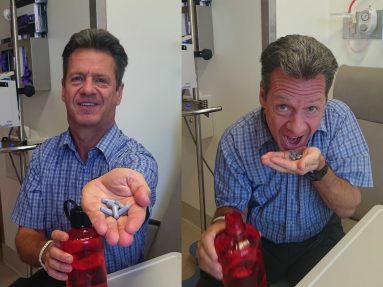
I’m now only required at the US clinic once every twelve weeks. The NIH hospital in Bethesda, near Washington, is a government funded research only hospital, and so all hospital costs are covered by the US federal government.
All the travel costs are paid by me, and I would like to acknowledge the support in this and so many ways that my family has given me.
Complete remission
I achieved a complete remission with no measurable residual disease, in mid 2017. No hairy cells to be found anywhere. none at all.
Finally I had found what looks to be a solid long term solution for me. I experience no negative side effects from taking Ibrutinib every day, and with a bit of luck, it will hold me a ‘chemically sustained remission’ forever.
I will have to travel to the US every twelve weeks to attend the clinic for the foreseeable future, until Ibrutinib is approved for use, firstly in the USA, and then with a bit of luck in Australia.
Creating hope for others with HCLv
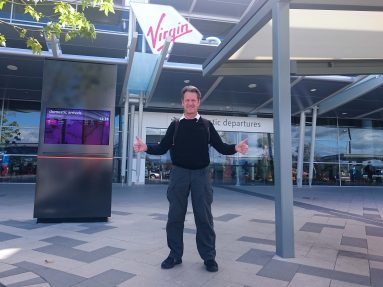
At the time of my last visit to the US clinic in July this year, I was the only HCLv person on the trial, and therefore the only one in the world, to have achieved a complete remission on Ibrutinib.
My continued inclusion on the trial therefore, is of considerable importance to those of us who have HCLv now, and in the future. Without my solitary tick in the ‘complete remission box’, the trial results would not be looking as promising for the approval of Ibrutinib to treat HCLv patients.
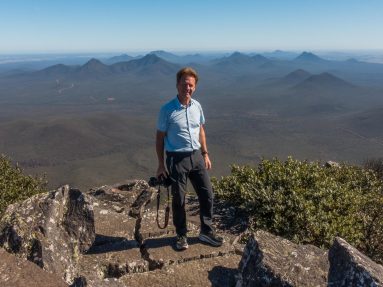
It has been a miracle drug for me, it may well have saved my life, and has returned me to ‘full health’. I do hope that other HCLv patients will have the opportunity to try this easy to tolerate drug in future too. If they respond to it as well as I have, they would wonder how they ever could have lived without it.
Last updated on January 3rd, 2023
Developed by the Leukaemia Foundation in consultation with people living with a blood cancer, Leukaemia Foundation support staff, haematology nursing staff and/or Australian clinical haematologists. This content is provided for information purposes only and we urge you to always seek advice from a registered health care professional for diagnosis, treatment and answers to your medical questions, including the suitability of a particular therapy, service, product or treatment in your circumstances. The Leukaemia Foundation shall not bear any liability for any person relying on the materials contained on this website.